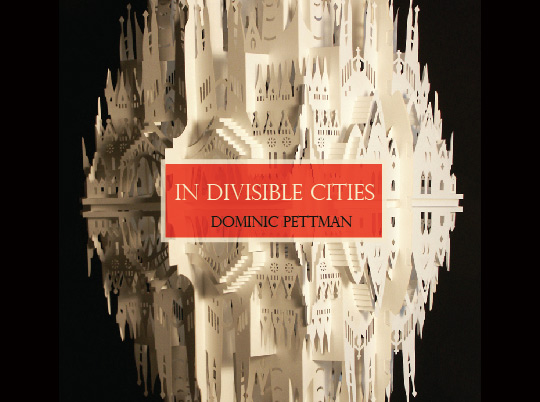How is In Divisible Cities related to Italo Calvino’s Invisible Cities?
I would call it a primary inter-text. For twenty years or so I have been enchanted by this kind of genre, restrained, aphoristic magical metafiction, or whatever we might call it, including Alan Lightman’s Einstein’s Dreams. But Calvino’s book really inspired me in terms of its condensed, crystalline approach, concerned with what Bachelard calls “the poetics of space.” Some critics believe that all of these different cities in Calvino’s book are in fact the author’s beloved Venice, in various imaginative iterations. Rather than celebrate one single city in various disguises, however, I wanted to trace the connections or song-lines between different ones; since no city is completely foreign in the 21st century. So the writing strategy was a series of postcards from different places, which hopefully add up to a single holographic image—like a jig saw puzzle.
How is this book structured?
The structure was the biggest challenge, since the through-line is very subtle and underdetermined, and the aphoristic sections could indeed be shuffled at will to different effect. (Indeed, there is going to be a very beautiful online version—designed by Alli Crandell—published at the same time as the book, which will allow for a more hypertextual experience of the story.) But I do think there is a silhouette of a story, or at least a “red thread,” linking the narrator and the romantic shadow. But the structure is tied more to space than time: like a map, moving from one coordinate to another.
Is there a plot in this book?
No, there is no plot as such; more a series of inter-locking meditations (two of my other inspirations for the book are Roland Barthes’ A Lover’s Discourse and Jean Baudrillard’s America). So the “story”—such as it is—is about the emotive influence of place, the anchoring—as well as uprooting—of memory, the fragile persistence of history, shades of anticipation inspired by geography, as well as an attention to those micro-moments in the city where the personal and the political meet in ways that make the connection conscious. The intention is a series of poetic telegraphs to an elusive beloved. I was also motivated by a book called What Time is This Place by Kevin Lynch.
How were the photos chosen for the excerpt? What are their sources?
I took a couple myself, but they were mostly lifted from the web whenever I stumbled across an image that seemed to resonate with one of the sections. This has been a challenge for the book, given my neglect of logging details at the time. So my wife, the graphic artist Merritt Symes, has done some creative repurposing of the originals, which give it a more consistent feel. As a side-note, I hadn’t read Sebald when I first started this project many years ago, but I felt a jolt as soon as I did.
Do you think there are any criteria for an ideal city?
A very interesting question, which deserves a whole thesis in response. But just quickly I can say that perhaps part of this project was an attempt to stitch together the ideal city from different actual ones. Venice is ideal in the sense that it has no cars and is painfully beautiful. But of course it is sinking, stinking, and doesn’t work for locals. I live in New York because it often lives up to the cliche of being the capital of the world. There is no such thing as an accent here, and everyone seems to be from everywhere else—which I love, and would consider ideal, because it discourages the notion of the outsider or foreigner. Having said that, the new affluence means that it is being flooded by “Americans” again, and it becoming culturally more nationalized. So I would say an ideal city would be a “community of those who have nothing in common.” It would also be affordable, non-violent, not too cold, aesthetically pleasing or surprising, dedicated to things other than making money, and allowing combinations of anonymity and intimacy. It should always crackle with playful potential, which I suppose is another way of saying there should be a palpable sense of Eros. This is why I love New York (in the Summer, when people stop working so much), but also Rome, Hong Kong, Istanbul, Tokyo, Palermo, etc. Having said that, the ideal city will always be “invisible,” or the one in our heads, as both Calvino and Gilles Trehin knew.
Click here for the excerpt of In Divisible Cities that ran in Asymptote’s Apr 2011 issue.
Find out more about In Divisible Cities here and check out the charming interactive e-book version here.
About the Author
Dominic Pettman is Professor of Culture and Media at Eugene Lang College, and of Liberal Studies, at The New School for Social Research (formerly “The University in Exile”). He has also held full-time faculty positions at the University of Geneva and the University of Amsterdam, as well as teaching appointments at the University of Melbourne, and the Polytechnic University, Brooklyn. His books include After the Orgy: Toward a Politics of Exhaustion (SUNY, 2002), Avoiding the Subject: Media, Culture and the Object (AUP, 2004, co-authored with Justin Clemens), Love and Other Technologies: Retrofitting Eros for the Information Age (Fordham, 2006), Human Error: Species-Being and Media Machines (Minnesota, 2011), and Look at the Bunny: Totem, Taboo, Technology (Zero Books, 2013).

